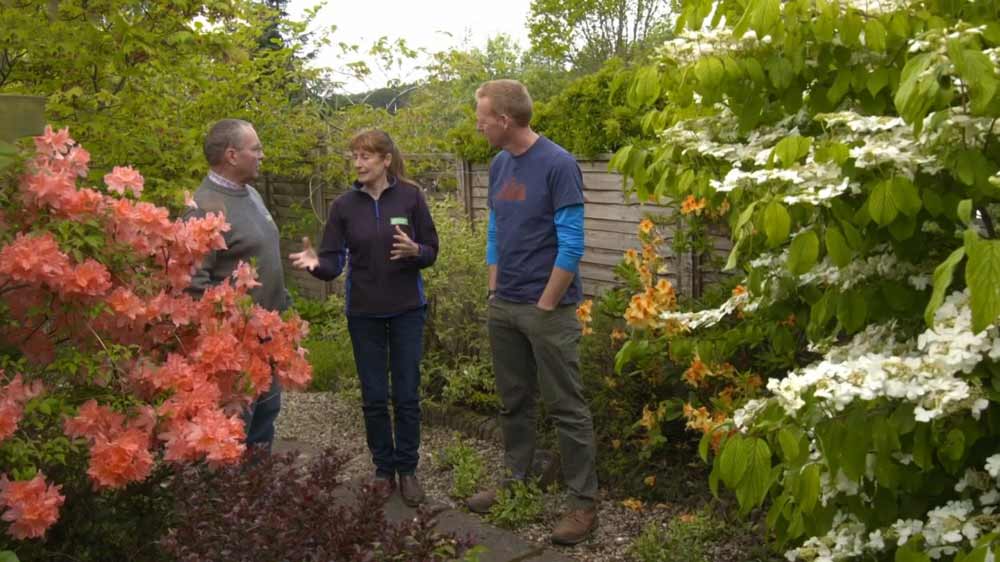In Beechgrove Garden episode 7 2019, competition is hotting up between what’s being grown in Carole’s immaculate 6×8 greenhouse compared to the Heath Robinson atmosphere of Brian’s poly tunnel. Carole returns to Garthdee allotments in Aberdeen to see how the youngest allotment holder, Sophie McKilligan, has fared after Carole’s first visit. Carole helps Sophie create an easy wildlife pond to attract wildlife and pollinators.
And George visits Waterside near Kilmarnock and Clover Park garden. The garden is an eclectic mix of architectural and ornamental features including a woodland and azalea walk, a fernery, a gunnera bog and is also home to a small herd of pygmy goats.
The Beechgrove Garden episode 7 2019
How to grow rhododendrons
Choose a site with dappled shade in sheltered conditions. Avoid deep shade beneath other trees. Most rhododendrons will tolerate a more open site if sheltered from cold, drying winds. Dwarf alpine species will tolerate full sun provided the soil does not dry out. Avoid frost pockets and sites exposed to early morning sun.
Research has found that soil-less potting media, including ericaceous peat-based and peat-free potting composts are suitable for rhododendron growing. However, they can lose their structure over time leading to poor drainage and an airless root environment, causing leaves to brown and die back. Re-potting every other year into fresh potting compost in early spring as soon as signs of growth are seen is recommended. In the intervening year, replace the top 5cm (2in) of compost. You can re-pot back into the same pot if you trim-off up to a third of the roots to make room for fresh potting compost.
Bog gardens
Creating a bog garden is the perfect use for a redundant or leaky pond, but it can also be an informal edge to an existing pond or a way of cultivating a naturally waterlogged dip in your garden. Bog gardens provide a range of attractive planting opportunities and are an excellent wildlife habitat.
Pond construction and repair
There are a number of ways of creating a pond. Most involve excavating a hole of the required shape: what is different is the type of impervious material used to line the hole. These include flexible waterproof liners, semi-solid preformed ponds and concrete.
